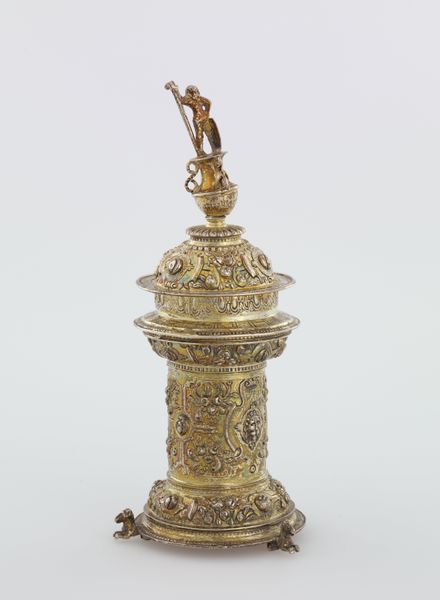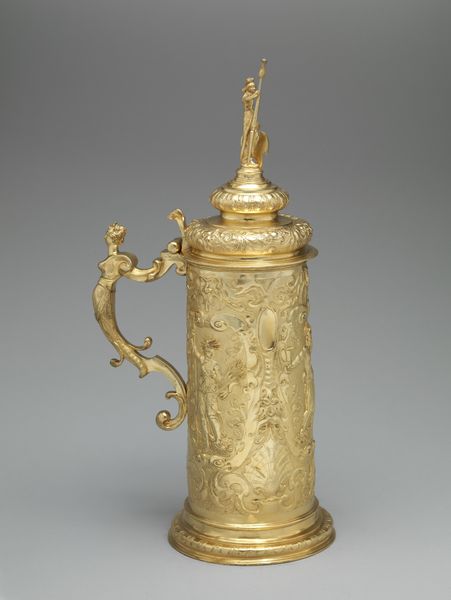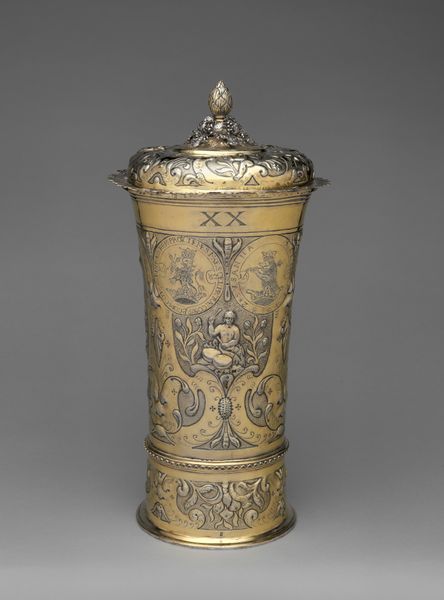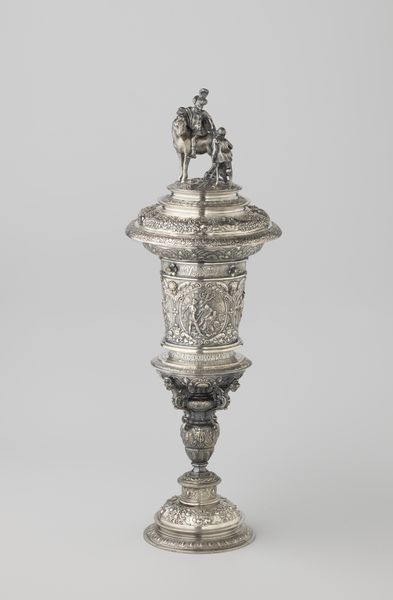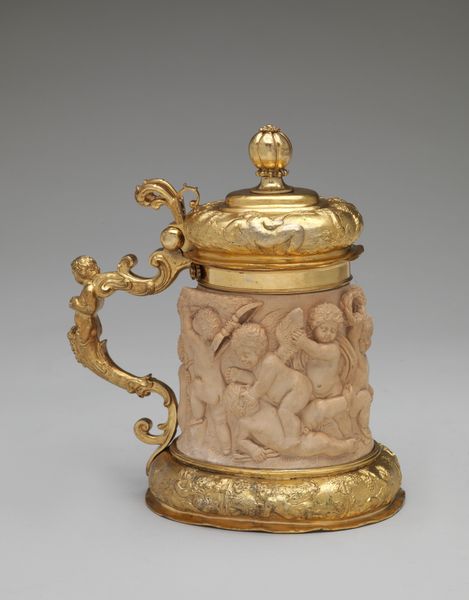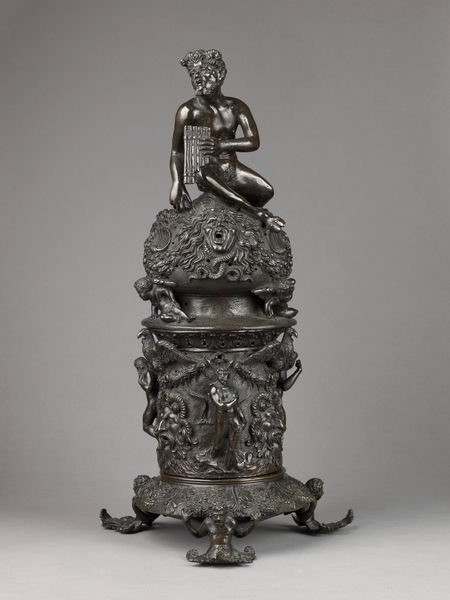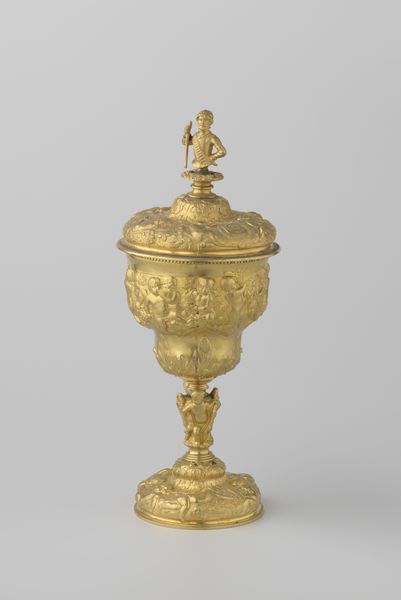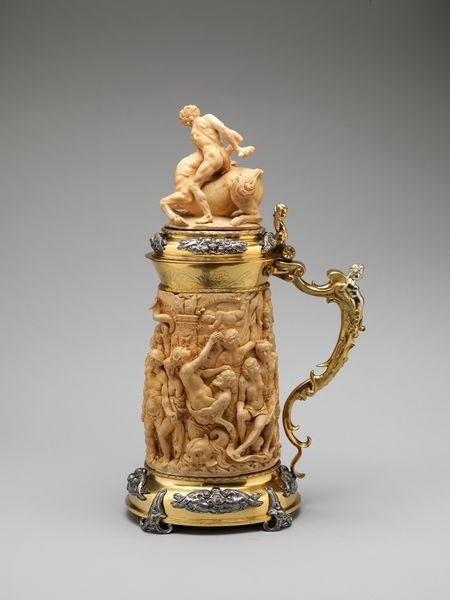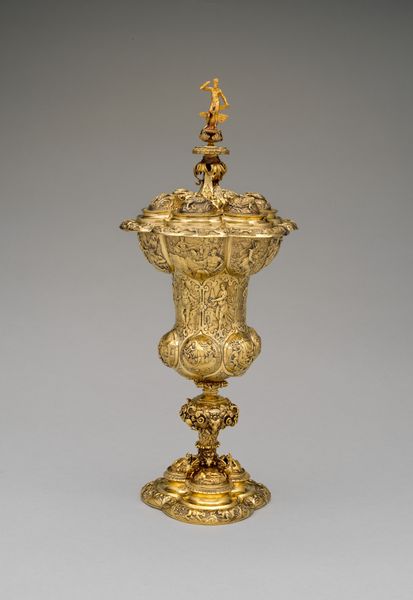
Galvanoplastische reproductie van een drinkkan met deksel met voorstelling van een bacchanaal before 1880
0:00
0:00
elkingtonco
Rijksmuseum
Dimensions: height 48 cm, width 29 cm, diameter 20 cm
Copyright: Rijks Museum: Open Domain
Curator: So, here we have a galvanoplastic reproduction of a covered drinking vessel from before 1880, currently held in the Rijksmuseum. It's attributed to Elkington & Co. Editor: My first impression? Deliciously decadent! All that silver and gold contrasting, swirling figures in what seems like perpetual revelry...it's baroque drama distilled into drinkware. Curator: Indeed. The piece is made using silvered brass and showcases a bacchanal scene – that is, a wild, drunken festival of Bacchus, the Roman god of wine. It's a reproduction made using the galvanoplastic technique, which allows for incredibly detailed replication of metal objects. Editor: Ah, so not solid silver, then. That shifts my perspective slightly. Galvanoplasty allows for intricate details without the costliness of pure precious metals. How were Elkington & Co. utilizing that technology, do you know? Were they serving the aristocracy, or expanding the availability of luxury goods to a new class? Curator: Elkington & Co. were pioneers in electroplating and galvanoplasty. They really capitalized on the Industrial Revolution, creating these stunning reproductions and making luxurious items more accessible. Think of them as the original purveyors of affordable opulence. This tankard would evoke baroque grandeur for a burgeoning middle class, a symbol of taste and refinement readily reproducible. Editor: Fascinating! So, it's not just about the mythical scene, but also the technological and social context in which it was created. Knowing it's a reproduction highlights the era's fascination with history and the desire to own tangible pieces of the past, re-interpreted through new industrial processes. But those tiny figures…what are they *doing*, exactly? It’s total chaos in miniature. Curator: It’s pure Bacchanalian mayhem! Look closely, and you’ll see satyrs, nymphs, drunken figures, grapes, and general debauchery – all symbolic of unrestrained pleasure and ecstatic release. It's a story being told on the surface of a drinking vessel, a little party in your hand. Editor: It is an invitation to indulge! Thinking about who would’ve purchased something like this…it says so much about their aspirations, both artistic and social. Not just for guzzling beer, is it? But for showing it off while debating taste and luxury, I would imagine. Curator: Absolutely. And that little figure riding a goat on top…a charming touch, no? It captures the sheer playfulness of the Baroque spirit. The skill involved is truly impressive when you remember this is not handcrafted. Editor: Exactly. The replication itself becomes part of the artwork’s story. In a way, mass-production gives new life to older artisanal concepts. Rethinking taste and craftsmanship beyond pure "originality" forces us to reflect on what we really want art to *do*. Thanks for opening my eyes to the drink, the technique and the times, with this tankard! Curator: The pleasure was mine! Here’s hoping we’ve helped our listeners appreciate the layered story behind this riotous vessel, both old and strangely, utterly modern.
Comments
No comments
Be the first to comment and join the conversation on the ultimate creative platform.
